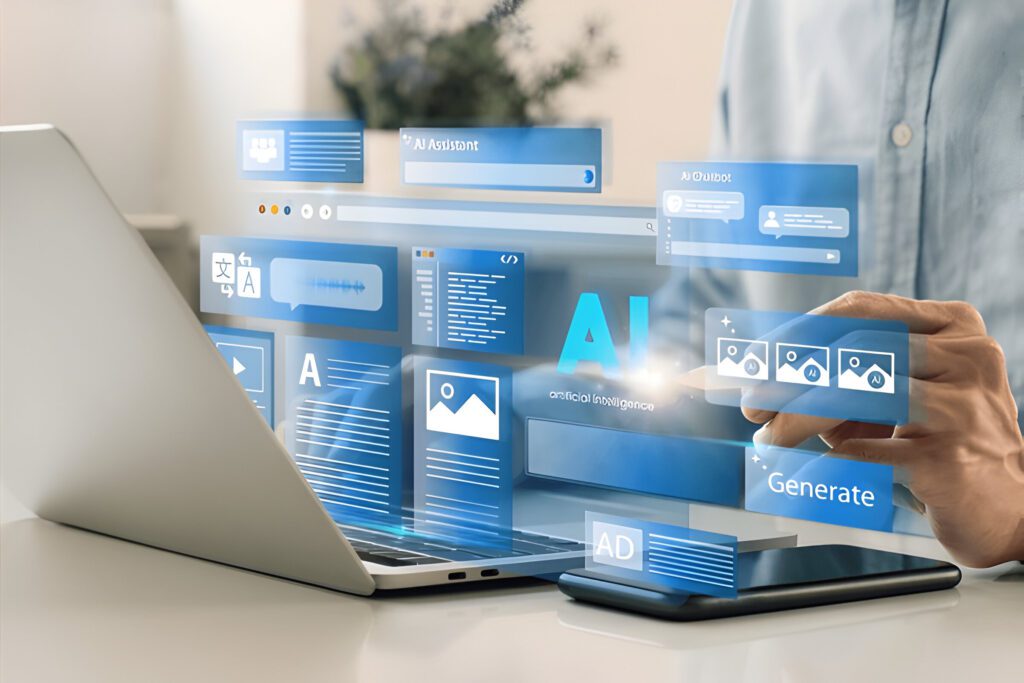
The retail industry is undergoing a significant Retail Revolution, thanks to the rapid advancements in artificial intelligence (AI). From personalized customer experiences to improved inventory management, AI is revolutionizing how retailers operate and engage with their customers. This article explores the key impacts of AI on the retail industry, supported by real-world case studies.
Personalized Customer Experiences
One of the most significant impacts of AI in retail is the ability to offer personalized customer experiences. AI-powered recommendation engines analyze customer data, including past purchases, browsing behavior, and preferences, to suggest products that are most likely to interest individual shoppers.
Case Study 1: Sephora’s Virtual Artist
Sephora’s Virtual Artist is a prime example of how AI can enhance the shopping experience. This AI-powered tool recommends beauty products based on user preferences and allows customers to virtually try on makeup. By leveraging computer vision and augmented reality, Sephora provides a highly personalized and interactive experience that helps customers make informed purchasing decisions.
Improved Inventory Management and Demand Forecasting
AI is also transforming inventory management and demand forecasting, helping retailers reduce stockouts and overstock situations. By analyzing historical sales data, current trends, and external factors, AI can predict future demand with high accuracy.
Case Study 2: Walmart’s AI-Driven Inventory Management
Walmart has implemented AI to optimize its inventory management and demand forecasting. By using machine learning algorithms to analyze vast amounts of data, Walmart can predict when and where products will be needed. This has resulted in reduced stockouts, improved operational efficiency, and better customer satisfaction.
Case Study 3: Starbucks’ Predictive Analytics for Demand Forecasting
Starbucks uses predictive analytics to forecast customer demand on a hyper-local level. By analyzing data from various sources, including weather, local events, and historical sales, Starbucks can optimize inventory and staffing decisions. This ensures that each store is adequately stocked and staffed, improving overall efficiency and customer experience.
Enhanced Operational Efficiency Through Automation
Automation of routine tasks is another area where AI is making a significant impact. By automating inventory tracking, customer service, and other repetitive tasks, retailers can improve operational efficiency and reduce costs.
Case Study 4: Amazon Go’s Checkout-Free Shopping Experience
Amazon Go is a groundbreaking example of how AI and computer vision can create a seamless shopping experience. The store uses a combination of cameras, sensors, and AI to track what customers pick up and automatically charge them when they leave the store. This eliminates the need for checkout lines, enhancing customer convenience and operational efficiency.
Greater Insights from Data Analysis
AI enables retailers to gain deeper insights from their data, allowing them to make more informed decisions about their products, marketing strategies, and overall business operations. By analyzing customer behavior, sales trends, and other data points, AI can uncover patterns and provide actionable insights.
Case Study 5: Stitch Fix’s Personalized Styling Recommendations
Stitch Fix leverages data science and AI to offer personalized styling recommendations. By analyzing customer preferences, body measurements, and feedback, Stitch Fix’s AI algorithms curate a selection of apparel that matches individual customers’ tastes. This personalized approach not only enhances customer satisfaction but also drives higher sales and customer loyalty.
The Rise of Chatbots and Virtual Assistants
Chatbots and virtual assistants powered by AI are becoming increasingly common in the retail industry. These tools can handle customer inquiries, provide product recommendations, and assist with transactions, enhancing customer engagement and satisfaction.
Example: H&M’s Virtual Assistant
H&M has launched a virtual assistant that helps customers find the right products and answers their questions. By using natural language processing (NLP) and machine learning, the virtual assistant can understand and respond to customer queries in real-time, providing a more efficient and engaging shopping experience.
Accelerated Innovation in Retail Technology
The integration of AI in retail has spurred the development of new tools and solutions that further enhance the industry’s capabilities. From smart shelves to automated warehouses, AI-driven technologies are driving innovation and setting new standards for retail operations.
Example: Ocado’s Automated Warehouse
Ocado, a UK-based online grocery retailer, uses AI and robotics to power its automated warehouse. AI algorithms control robots that pick and pack groceries, optimizing efficiency and accuracy. This innovative approach allows Ocado to fulfill orders quickly and accurately, setting a new benchmark for the industry.
Conclusion
The retail industry is experiencing a revolution driven by AI. From personalized customer experiences to improved inventory management and enhanced operational efficiency, AI is transforming every aspect of retail operations. Real-world examples from companies like Amazon, Sephora, Walmart, and Starbucks demonstrate the tangible benefits of AI in retail.
Retailers that embrace AI-driven technologies will be better positioned to meet the evolving demands of their customers and stay ahead of the competition. Whether it’s through personalized recommendations, efficient inventory management, or automated customer service, AI offers a wealth of opportunities for retailers to innovate and thrive.
Ready to explore the potential of AI for your retail business? Sign up for Jasper’s free trial today and discover how AI can revolutionize your operations and drive success.
For more information click below
The Retail Revolution: How AI is Transforming the Industry
AI in Agriculture: Revolutionizing Farming Practices
The Transformative Power of AI in Healthcare
How AI is Transforming the Automotive Industry
AI in Education The Latest Innovations and Tools
Top AI Tools for Financial Analysis and Trading

8 thoughts on “The Retail Revolution: How AI is Transforming the Industry”